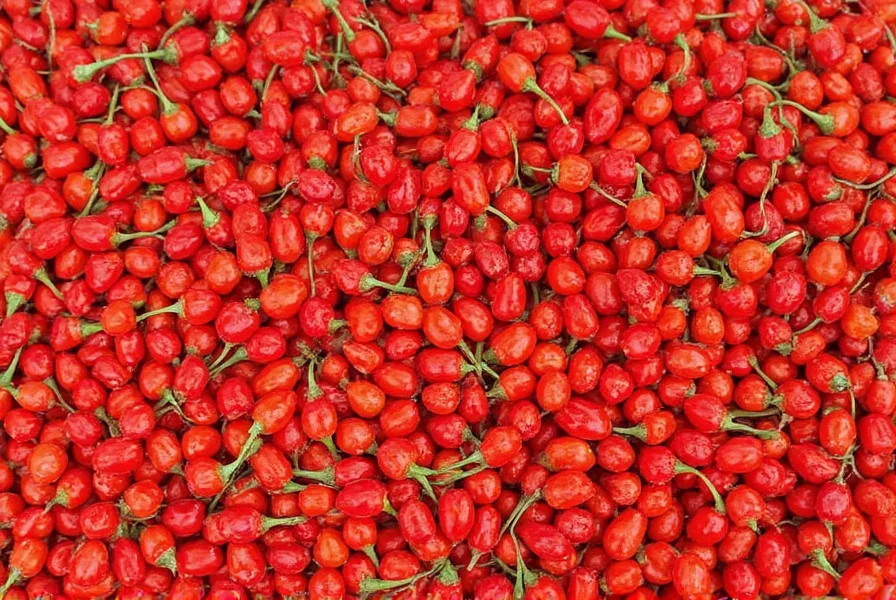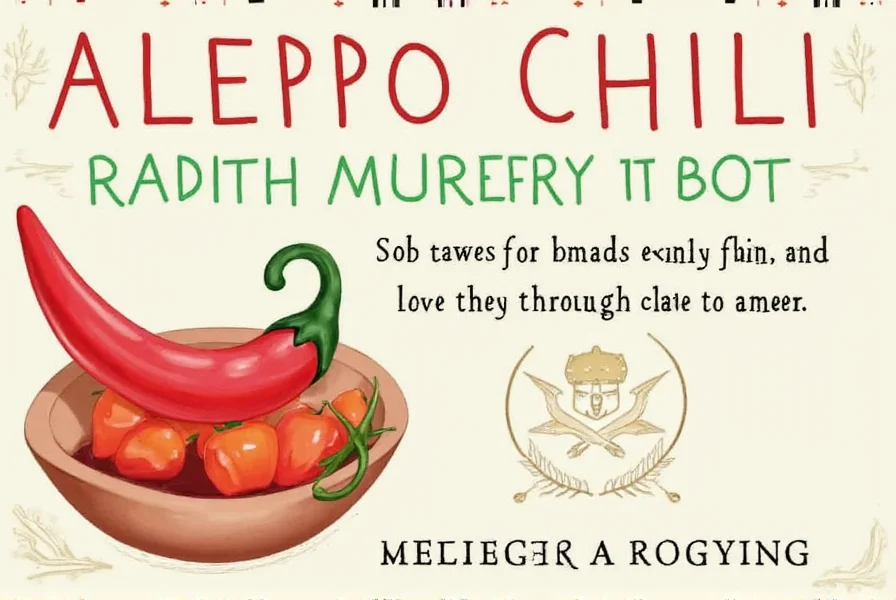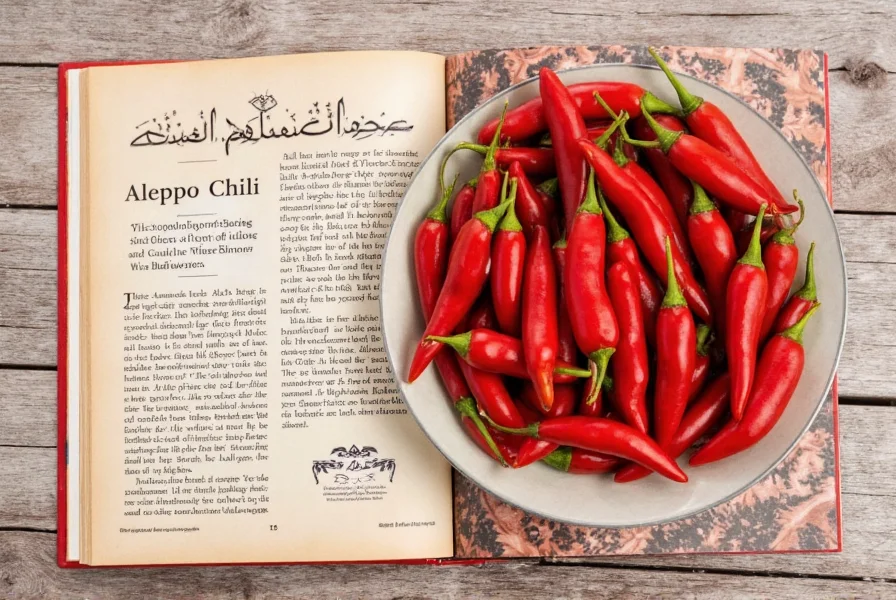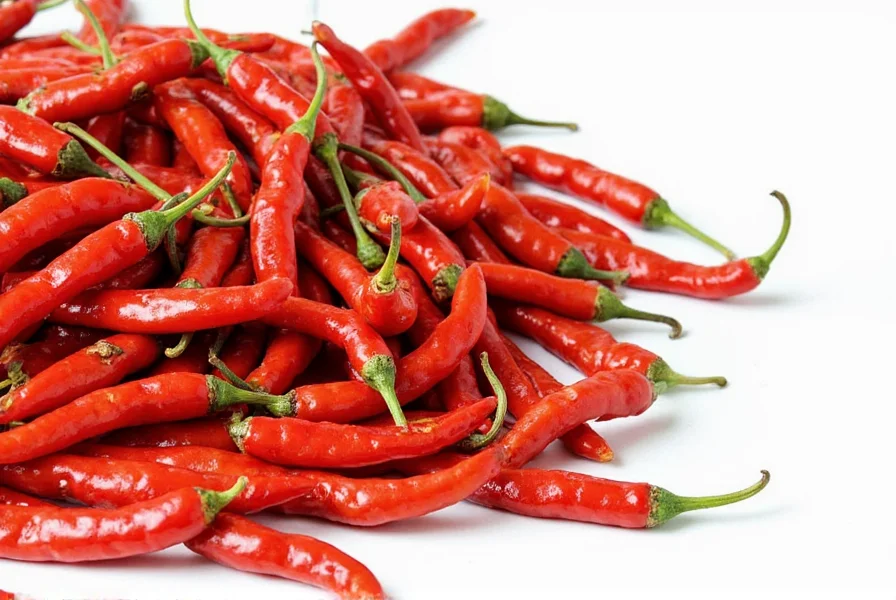Aleppo chili (also known as Halaby pepper) is a dried red pepper originating from Aleppo, Syria, prized for its mild heat (30,000-50,000 Scoville units), sweet, smoky flavor, and versatility in Middle Eastern cuisine. This comprehensive guide covers everything you need to know about Aleppo chili, including its origins, flavor profile, cooking applications, how to choose the best quality, substitutes, and FAQs.
Table of Contents
What Is an Aleppo Chili?
The Aleppo chili is a type of dried red pepper originating from the city of Aleppo in Syria. It's known for its deep red color, slightly wrinkled texture, and a flavor profile that combines heat with a subtle sweetness and smokiness. Unlike the more commonly known cayenne or jalapeño, the Aleppo chili has a milder heat level but a more complex flavor, making it a favorite among chefs and home cooks alike.

This chili is often used whole, crushed, or ground into a paste. It's a staple in Middle Eastern cuisine, especially in dishes like shakshuka, hummus, and various meat stews. Its popularity has grown beyond the region, and now it's found in specialty spice shops and online stores around the world.
Flavor Profile of Aleppo Chili
The Aleppo chili is often described as having a mild to medium heat level, typically ranging between 30,000–50,000 Scoville units. This makes it hotter than a bell pepper but much milder than a habanero or ghost pepper. What really sets it apart, though, is its flavor:
- Sweetness: A natural fruitiness that balances the heat.
- Smokiness: Slight smoky undertones that add depth.
- Tangy notes: A hint of acidity that brightens up dishes.

This combination of heat, sweetness, and smokiness makes it incredibly versatile. It works well in both hot and cold dishes, adding a unique layer of flavor without overwhelming the other ingredients.
Cooking With Aleppo Chili
Whether you're grinding it into a paste, using it as a seasoning, or simply sprinkling it on top of your favorite dish, the Aleppo chili can elevate your cooking in so many ways. Here are some popular ways to use it:
1. Aleppo Chili Paste
Aleppo chili paste is made by soaking the peppers in olive oil and blending them until smooth. This paste can be used as a base for sauces, marinades, or even as a spread. It adds a rich, spicy flavor that's perfect for dips, dressings, and stews.

2. Seasoning and Rubs
Crushed Aleppo chilies make a great seasoning for grilled meats, roasted vegetables, or even popcorn. The mild heat and complex flavor make it a great alternative to paprika or cayenne.
3. Dips and Sauces
Add a pinch of crushed Aleppo chili to your hummus, tzatziki, or guacamole for an extra kick. It pairs particularly well with creamy textures, balancing the richness with its tangy and smoky notes.
4. Salads and Vinaigrettes
For a zesty twist, mix a small amount of Aleppo chili into your vinaigrette. It brings a nice heat and brightness to salads, especially those with leafy greens and fresh vegetables.
Buying Guide: How to Choose the Best Aleppo Chili
If you're new to Aleppo chili, choosing the right product can be a bit confusing. Here's a detailed buying guide to help you find the best one for your needs:
1. Whole vs. Crushed vs. Ground
- Whole: Ideal for grinding at home or using in dishes where you want the pepper to retain its texture. It tends to have a longer shelf life. - Crushed: Great for sprinkling over dishes or mixing into rubs. It offers a balance between flavor and convenience. - Ground: Perfect for recipes that require a fine spice. Be cautious with ground Aleppo chili, as it can lose potency over time.

2. Quality and Origin
Look for Aleppo chili from trusted sources, especially if you're looking for authenticity. While many products are labeled as "Aleppo chili," not all are sourced directly from Syria. High-quality Aleppo chili should have a vibrant red color, a slightly wrinkled texture, and a pleasant aroma.
3. Heat Level
Not all Aleppo chilies are created equal. Some may be hotter than others depending on the variety and growing conditions. If you're unsure, start with a small amount and adjust to your taste.
4. Packaging and Shelf Life
Choose products that come in sealed, airtight packaging to preserve freshness. Store them in a cool, dark place away from moisture and direct sunlight.
Tips and Tricks for Using Aleppo Chili
Here are some practical tips to help you get the most out of your Aleppo chili:
- Start Small: Since it's a strong spice, begin with a small amount and add more gradually.
- Pair with Creamy Ingredients: The heat of Aleppo chili pairs beautifully with dairy, like yogurt or cheese, which helps balance the spiciness.
- Use in Cold Dishes: Try adding it to salads, cold soups, or even cocktails for a surprising twist.
- Make Your Own Paste: Soak the peppers in olive oil, blend, and store in a jar for easy use.
- Experiment: Don't be afraid to try it in unexpected places, like scrambled eggs, pasta, or even desserts for a unique flavor profile.

Remember, the key to enjoying Aleppo chili is to let it shine while complementing the other flavors in your dish. It's a spice that invites creativity and experimentation.
Frequently Asked Questions
What is the difference between Aleppo chili and regular red pepper flakes?
Aleppo chili has a more complex flavor profile with notes of fruitiness, mild heat, and slight smokiness, whereas regular red pepper flakes (often made from cayenne) tend to be sharper and more one-dimensional in heat. Aleppo chili is also typically coarser and oil-cured, giving it a distinctive texture and deeper flavor.
How hot is Aleppo chili compared to other common peppers?
Aleppo chili ranges from 30,000-50,000 Scoville units, making it milder than cayenne (50,000-100,000) but hotter than paprika (100-500). It's about half as hot as a habanero. The heat is more rounded and balanced with fruitiness rather than being purely intense.
What can I use as a substitute for Aleppo chili?
If you don't have Aleppo chili, a good substitute is a mixture of 1 part cayenne pepper to 2 parts sweet paprika, with a pinch of salt and a few drops of lemon juice to mimic its complex flavor profile. Maras pepper from Turkey is also a close alternative with similar mild heat and smoky notes.
How long does Aleppo chili stay fresh?
Properly stored in an airtight container away from light and moisture, whole Aleppo chilies can stay fresh for up to 2 years. Crushed or ground versions maintain their best flavor for 6-12 months. You'll know it's lost potency when the vibrant red color fades and the aroma diminishes.
Are there health benefits to using Aleppo chili?
Like other chili peppers, Aleppo chilies contain capsaicin (though in moderate amounts) which may boost metabolism and provide anti-inflammatory benefits. They're also rich in vitamin C and antioxidants. The oil-curing process preserves many of these beneficial compounds while making them more bioavailable.
Can I grow Aleppo chili peppers myself?
Yes, though the authentic Aleppo chili (Halaby) is specific to its region, you can grow similar varieties like the Turkish Maras or other moderately hot, flavorful chilies. They require warm temperatures, well-draining soil, and plenty of sun. The peppers are typically harvested when fully red and then sun-dried before being processed.
Conclusion
The Aleppo chili is more than just a spice—it's a flavorful gateway to the rich culinary traditions of the Middle East. With its mild heat, sweet and smoky notes, and incredible versatility, it's a must-have in any spice cabinet. Whether you're using it in a traditional recipe or putting your own spin on it, the Aleppo chili has the power to bring warmth, depth, and excitement to your cooking.
As you explore the world of spices, remember that the Aleppo chili is a true gem. Its unique character and historical significance make it a standout choice for both casual cooks and professional chefs. So next time you're reaching for a spice, consider giving the Aleppo chili a try—you might just discover a new favorite.











 浙公网安备
33010002000092号
浙公网安备
33010002000092号 浙B2-20120091-4
浙B2-20120091-4